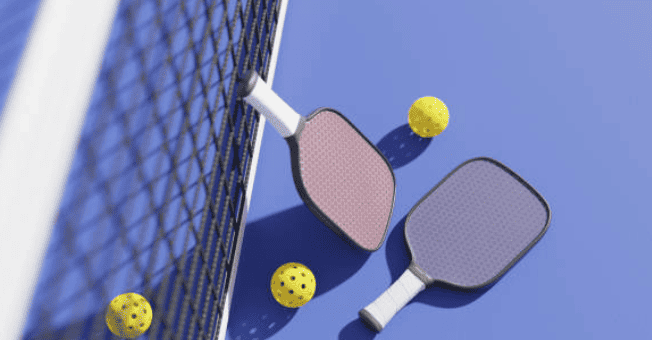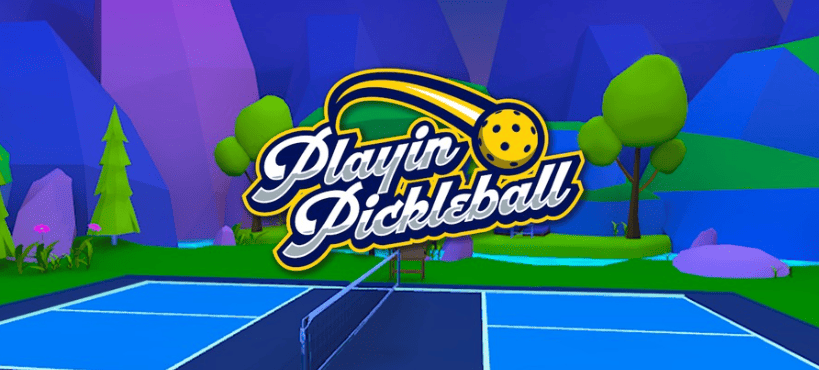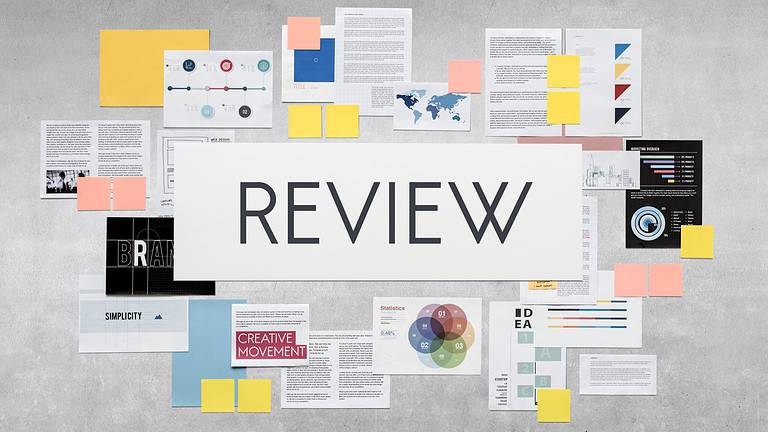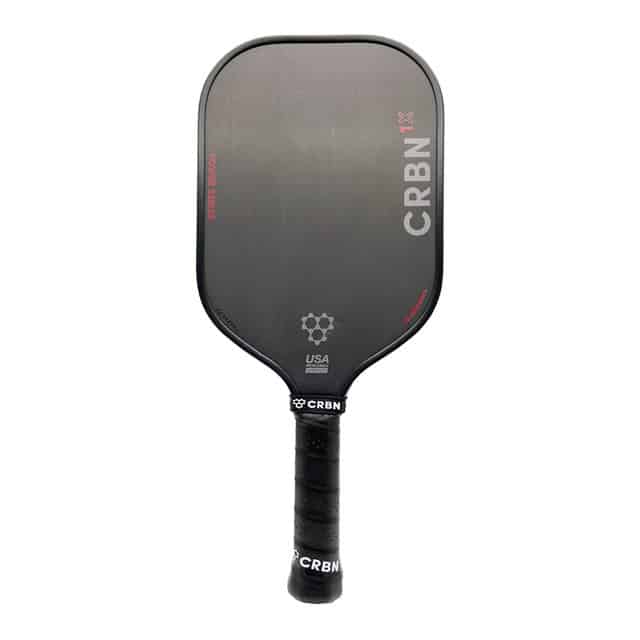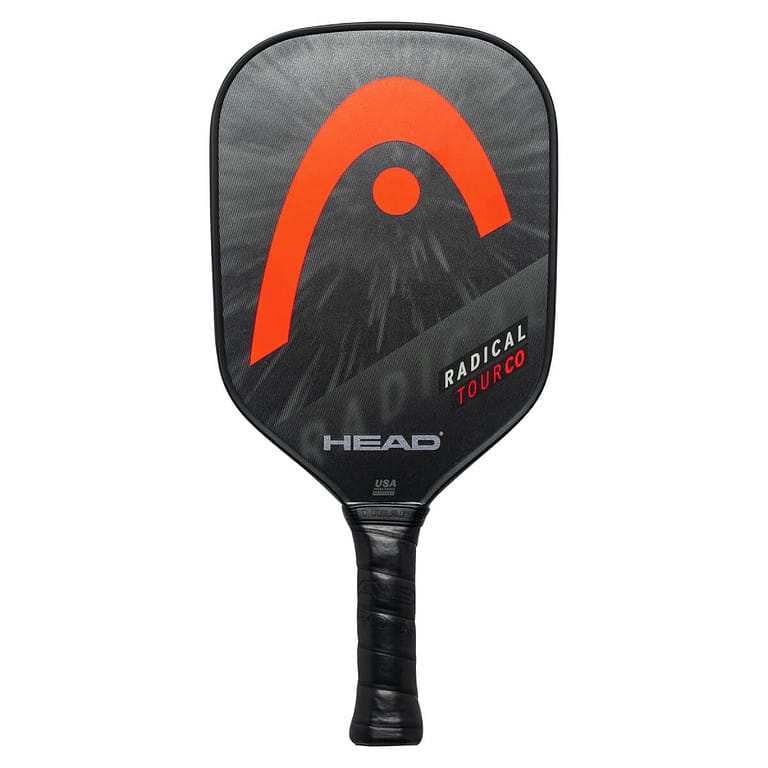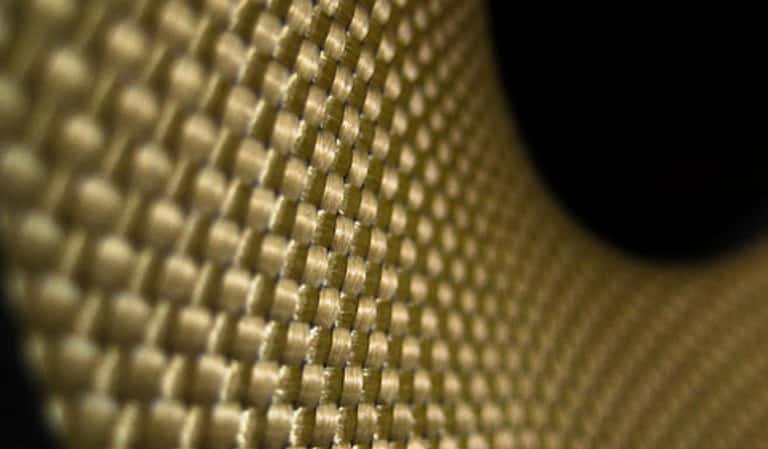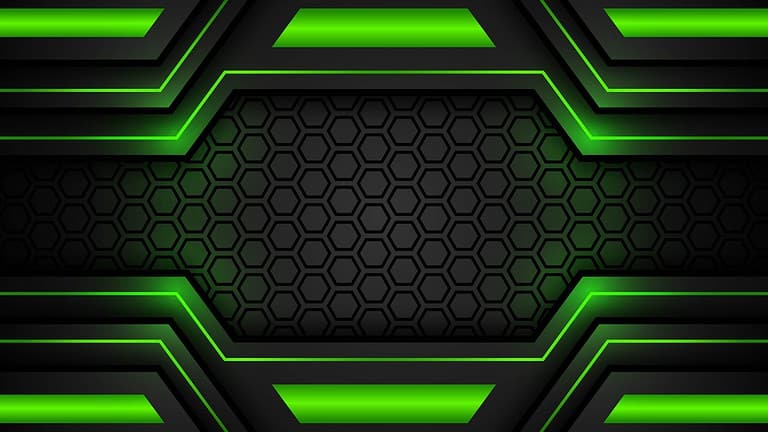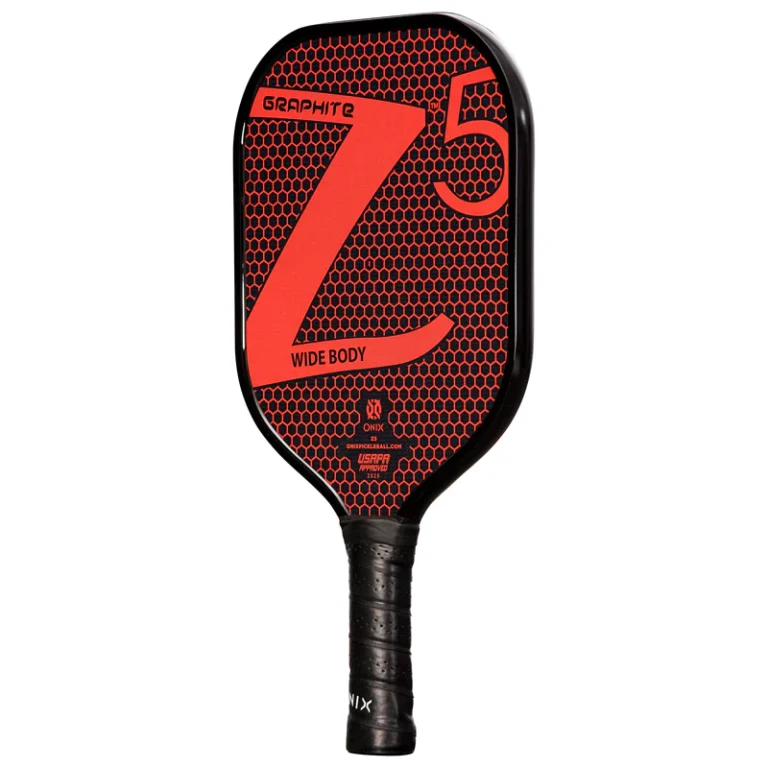31 Best Emerging Technologies Impacting Pickleball
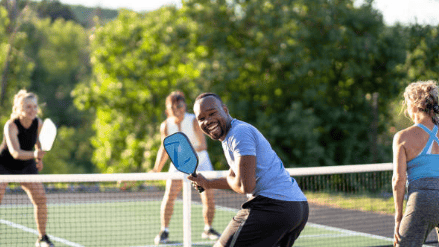
With Pickleball being the fastest-growing sport in the US, we are beginning to see new technologies emerge that not only redefine paddle technology but also smart technologies for improving play for both players and teams. The landscape is changing rapidly. At SportyEscapade, we focus on technology in sports play.
What are the 31 Emerging Technologies?
1. Smart Pickleball Paddles
Smart pickleball paddles are the game’s future, incorporating advanced sensor technology to provide real-time data and analysis. Equipped with sensors embedded in the paddle, these innovative paddles can track shot speed, spin, and angle, and even offer feedback on technique.
With the ability to measure and analyze performance metrics, players can gain valuable insights into their game, identify areas for improvement, and make data-driven adjustments to enhance their skills.
Smart paddles will offer an interactive and personalized training experience, allowing players to fine-tune their technique, optimize shot placement, and ultimately elevate their level of play. Embrace the power of technology and unlock your full potential on the pickleball court with a smart paddle.
2. Pickleball Training Apps
Mobile applications designed specifically for pickleball training and analysis are emerging. These apps can offer instructional videos, practice drills, and even virtual coaching to help players enhance their skills.
Pickleball training apps can and will change how players learn, practice, and improve their skills. These dedicated mobile applications offer a wealth of instructional content, practice drills, and strategy tips explicitly tailored for pickleball.
With interactive tutorials and videos from top players and coaches, players can learn proper technique, shot placement, and game strategies at their own pace.
Additionally, these apps often provide tracking and progress monitoring features, allowing players to set goals, track performance, and measure progress over time.
Pickleball Apps: Find Partners, Courts, Train, & More – Learn More

Vizual Edge is one of the cutting-edge interactive visual sports training tools. It is available on a pad or laptop.
Visual Drilling Apps: The Future Of Pickleball Performance – Learn More
3. Virtual Reality Training
VR technology can simulate pickleball courts and provide a realistic training environment for players. This can be particularly useful for beginners or players who want to practice specific scenarios without needing a physical court.
VR training allows players to fine-tune their shots, practice footwork, and work on strategy in a controlled and interactive environment.
The ability to repeat actions and receive instant feedback helps players refine their technique and improve decision-making.
Plant Fusion

Virtual reality also allows simulation matches against virtual opponents of varying skill levels, providing valuable practice and challenging gameplay. By leveraging the power of VR, pickleball players can elevate their game, increase their confidence, and transfer their enhanced skills to real-world pickleball courts.
Virtual Reality (VR) Games: Training, Drilling & More – Learn More
4. Ball Tracking Systems
Similar to tennis, advanced ball tracking systems using computer vision or sensors can track the trajectory and movement of the ball during play. This technology can be used for replay analysis, line calls, or even generating statistics about shot placement.
5. Automated Pickleball Machines
Automated ball machines designed specifically for pickleball are becoming more advanced, allowing players to practice solo with adjustable settings, random shot patterns, and programmable drills.
Automated Ball Machines – Learn More
6. Wearable Technology
Smartwatches and fitness trackers can monitor players’ heart rates and activity levels and even track pickleball-specific metrics like shots taken, distance covered, and calories burned during a game.
Some advanced wearable devices offer sport-specific features like stroke analysis and shot detection. These devices can provide feedback on shot speed, swing technique, and shot placement, allowing players to assess their performance and adjust for improvement. Additionally, these wearables can provide alerts and reminders for hydration, rest, and recovery, helping players optimize their training and reduce the risk of injuries.
GPS-enabled wearables can track movement on the court, providing players with data on court coverage, speed, and distance traveled. This information can be valuable for analyzing playing patterns, identifying areas of the court that may require more attention, and assessing overall court presence and positioning.
7. Artificial Intelligence Line Calling
AI-based systems can accurately call balls in or out of bounds, eliminating the need for line judges in official matches.
AI line calling systems utilize advanced algorithms and computer vision to provide accurate and objective line calls.
These systems analyze high-resolution camera footage or sensor data to track the ball’s trajectory and determine its position relative to the court lines. The AI algorithms can detect the exact moment the ball touches the court surface and accurately determine if it is within the boundaries.
AI line calling systems can deliver real-time results, instantly displaying the line call on scoreboards or digital displays. This immediate feedback allows players, officials, and spectators to have instant visibility and clarity on the call, enhancing the flow and excitement of the game.
Line Calling Systems – Learn More
8. Biomechanical Analysis Tools
Biomechanical analysis tools allow players to evaluate and improve their technique by providing detailed insights into their movement patterns, body mechanics, and performance on the court. These tools utilize advanced motion capture systems, wearable sensors, and sophisticated software algorithms to analyze the biomechanics of players’ movements.
9. Smart Court Systems
Smart court systems are innovative technological solutions designed to enhance the pickleball playing experience by incorporating advanced sensors, data analytics, and automation into the court infrastructure. These systems offer a range of features that improve gameplay efficiency, accuracy, and convenience.
10. Court Lighting Systems
LED lighting systems designed specifically for pickleball courts are being developed. These systems provide consistent and optimal lighting conditions, ensuring better visibility for players during the evening.
11. Pickleball-Specific Analytics Software
Pickleball-specific analytics software is a powerful tool that enables players and coaches to delve deeper into the data behind their pickleball performance. This software captures and analyzes various metrics related to pickleball gameplay, providing valuable insights and actionable information for improvement.
12. Interactive Training Platforms
Online platforms with interactive training modules and virtual coaching for pickleball players of all levels allowing for personalized and structured training programs.
Visual Drilling Apps: The Future Of Pickleball Performance – Learn More
13. Real-Time Performance Feedback
Wearable technology and sensor-equipped paddles that provide instant feedback on shot quality, swing technique, and other performance metrics during gameplay.
14. Pickleball Specific Fitness Apps
Mobile applications tailored to pickleball players, offering fitness routines, injury prevention exercises, and customized workout plans to improve overall performance and conditioning.
15. Pickleball-Specific Equipment Rental Services
Services that provide pickleball equipment rentals, allowing beginners and travelers to try the sport without the need for upfront investment.
16. Mobile Apps for Match Organization
Mobile apps that facilitate the organization of pickleball matches, helping players find local opponents, arrange games, and track results and rankings.
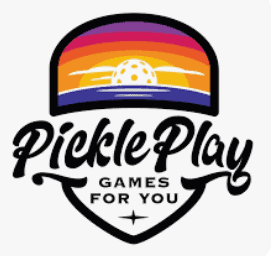
Pickleplay is an app that is in the Apple and Google Play stores that allows you to find courts, connect with players, and much more.
Pickleball Apps: Find Partners, Courts, Train, & More – Learn More
17. Pickleball-Specific Training Equipment
Innovative training devices and equipment designed to improve specific aspects of pickleball skills, such as shot accuracy, speed, and reaction time.
Pickleball Training Aids – Learn More
18. Virtual Reality Match Simulations
VR simulations that replicate real pickleball matches, enabling players to practice against virtual opponents and improve decision-making under different game scenarios.
Virtual Reality (VR) Games: Training, Drilling & More – Learn More
19. AI Powered Player Matchmaking
AI-powered player matchmaking is an innovative feature in pickleball that utilizes artificial intelligence algorithms to pair players with suitable opponents based on their skill level, playing style, and preferences.
Plant Fusion

The AI analyzes player data, such as performance metrics and historical match results, to create personalized player profiles. Considering these profiles, the AI algorithm can accurately match players of similar skill levels, ensuring fair and competitive gameplay.
What Is DUPR Rating System For Pickleball: Amateurs to Pros – Learn More
20. Virtual Pickleball Communities
Online platforms and virtual reality experiences enable players to connect, compete, and socialize with fellow pickleball enthusiasts worldwide.
Pickleball Apps: Find Partners, Courts, Train, & More – Learn More
21. Virtual Pickleball Tournaments
Online tournaments and competitions where players can compete remotely from different locations, increasing accessibility and participation in competitive play.
Virtual Reality (VR) Games: Training, Drilling & More – Learn More
22. 3D Printed Paddle Customization
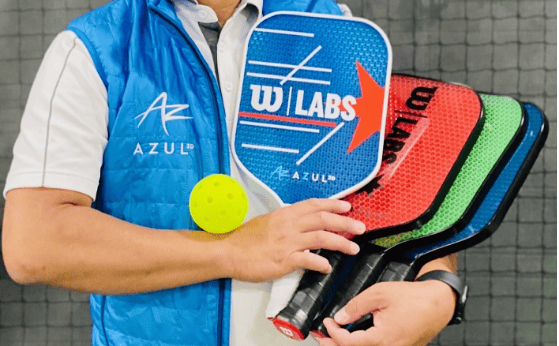
3D printing technology enables players to customize paddle designs, weight distribution, and grip to suit their preferences and playing style. Wilson has created the first of this type with their partnership with Azul.
With this cutting-edge technology, players can have paddles tailored to their specific preferences and playing styles. The flexibility of 3D printing allows for the creation of intricate designs, personalized grip sizes, optimized paddle shapes, and sound (quieter).
This level of customization ensures that players have paddles that feel comfortable in their hands and offer improved control, power, and maneuverability on the court. Additionally, 3D printing opens up possibilities for experimenting with different materials and paddle constructions, enabling players to explore innovative paddle designs that push the boundaries of performance and responsiveness in pickleball.
23. Smart Court Maintenance Systems
Sensor-based systems that monitor court conditions detect damage or hazards and provide alerts for maintenance and repair.
24. Pickleball-Specific Gaming Platforms
Video games and virtual simulations that replicate the pickleball experience, allowing players to practice skills, compete, and experience the sport in a digital format.
25. Automated Ball Retrieval Systems
These mechanized systems collect and return pickleballs during practice sessions, reducing the need for manual ball retrieval and increasing training efficiency.
26. Data-Driven Training Programs
Training programs based on data analytics, performance metrics, and AI algorithms enabling personalized and optimized training plans tailored to individual players.
27. Enhanced Court Lighting Solutions
Advanced lighting solutions that optimize visibility on pickleball courts, minimizing shadows and glare for improved gameplay and safety.
28. Pickleball-Specific Skills Assessments
Online platforms or apps that offer pickleball skill assessments allowing players to evaluate their abilities, identify strengths and weaknesses, and track progress over time.
29. Crowd Engagement Technologies
Interactive technologies integrated into live events, such as real-time audience polling, interactive displays, and augmented reality experiences, enhancing spectator engagement.
30. Player Performance Tracking Systems
Advanced tracking systems that capture and analyze player movement data, providing insights into positioning, court coverage, and strategic decision-making.
31. Pickleball Specific Training Camps & Retreats
Specialized training programs and immersive experiences where players can receive expert coaching, participate in intensive workshops, and engage with other pickleball enthusiasts.
Pickleball Camps (NA & International) For Adults – Learn More

